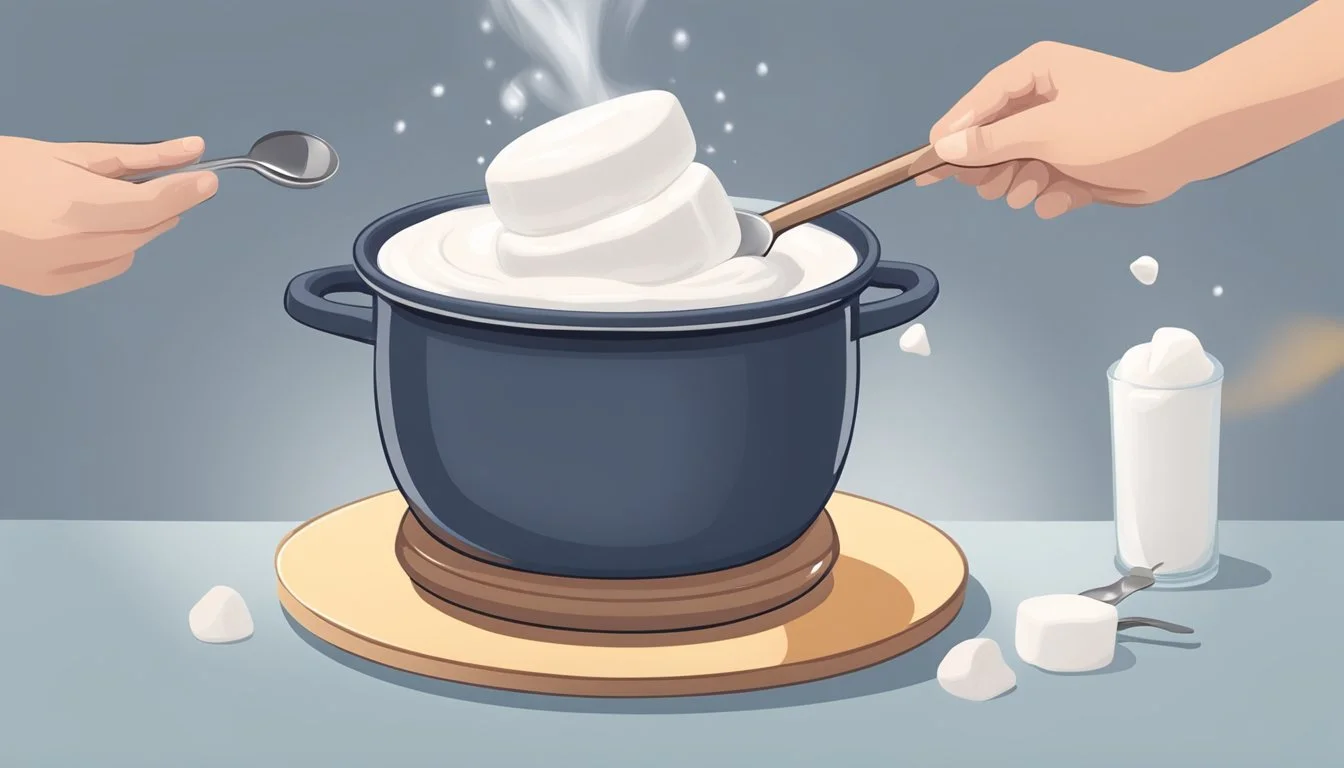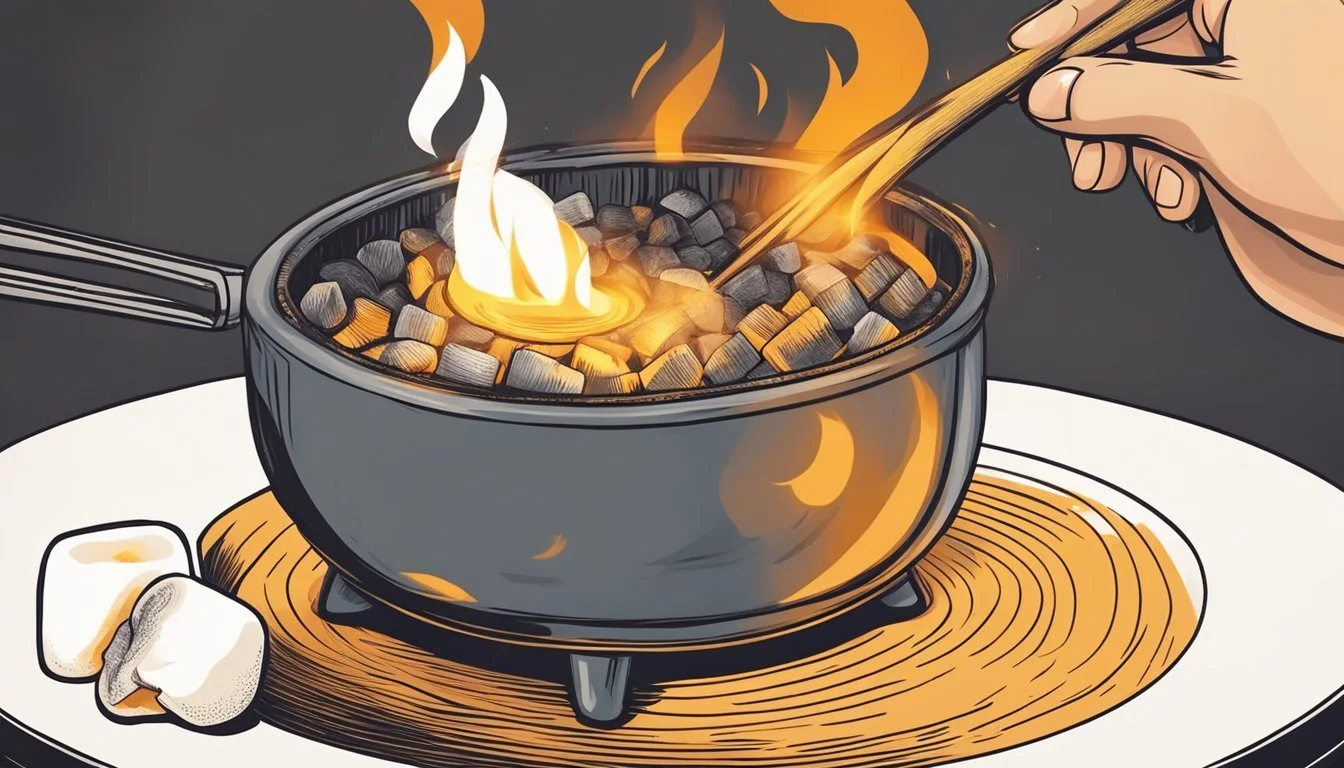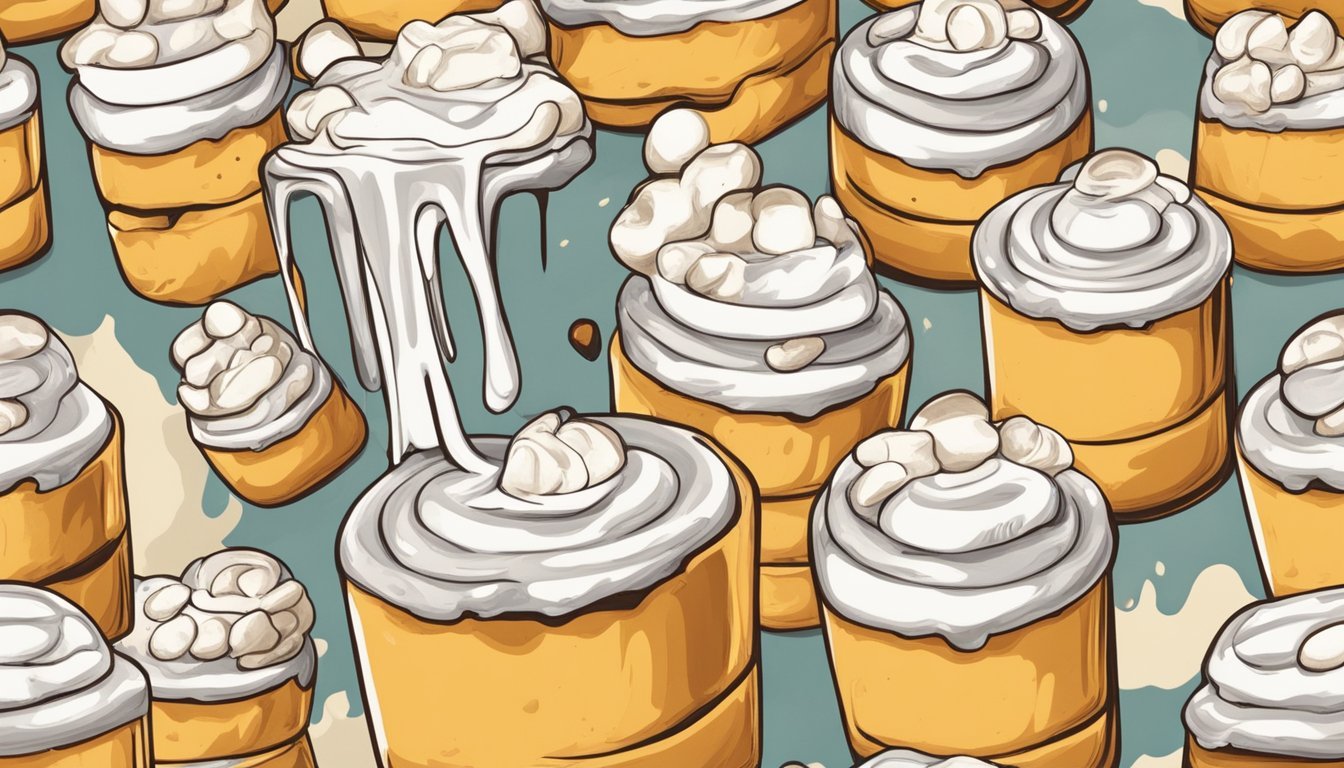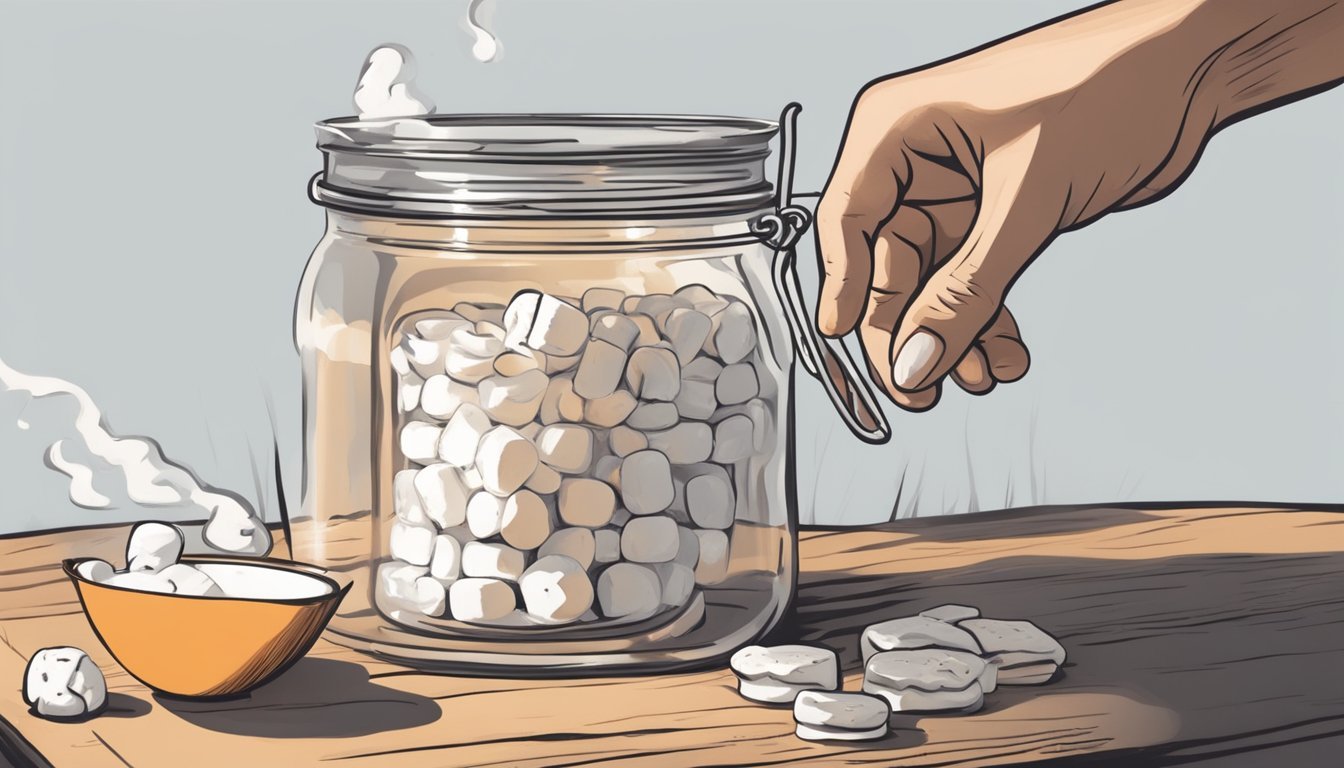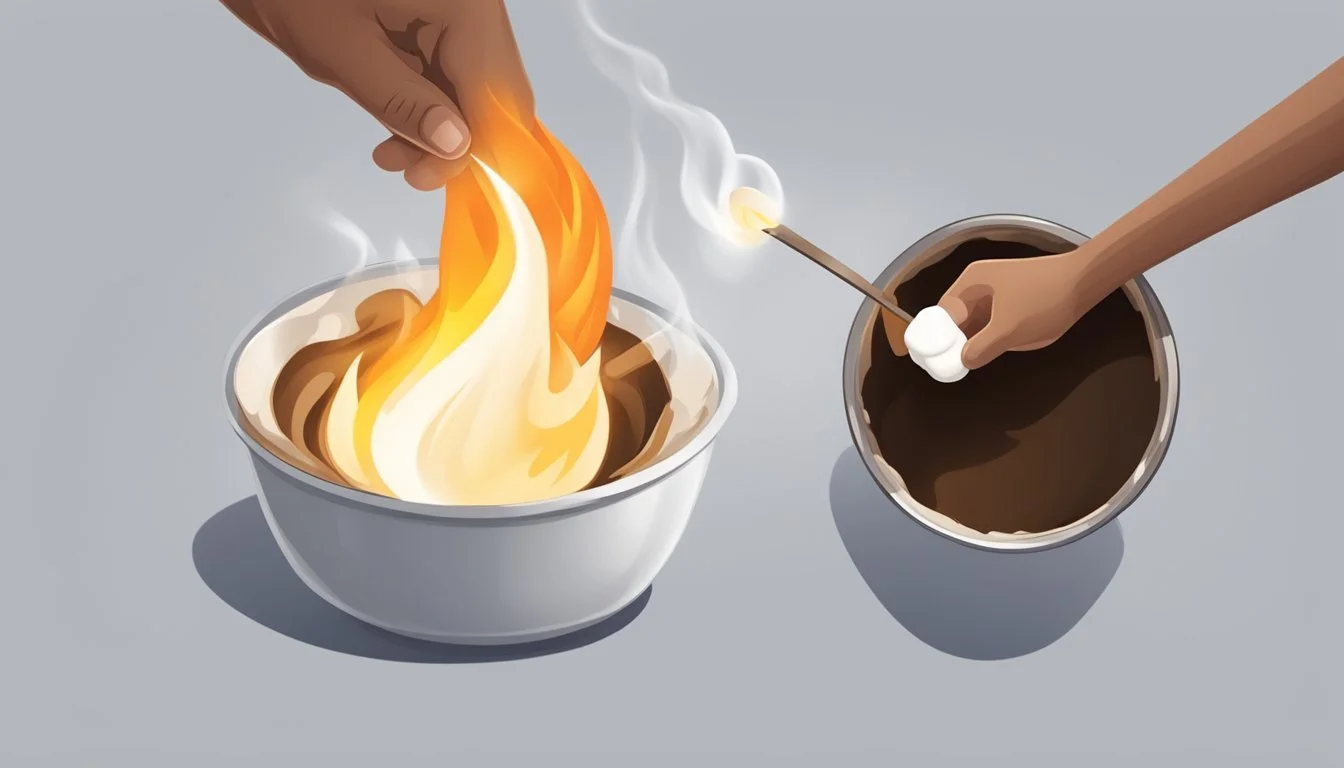Saving Burnt Marshmallow Fluff
Strategies for Restoring Flavor and Enjoyment
Cooking marshmallow fluff can be a delicate process, and even experienced cooks can sometimes face the challenge of a burnt batch. When the sweet, creamy spread takes on a bitter, charred flavor, it may seem like all is lost. However, there are strategies to mitigate the bitterness and reclaim much of that beloved sweetness. The key lies in understanding the causes of burning and implementing careful, thoughtful remedies.
Addressing a burnt marshmallow fluff involves both removing the bitter taste and stabilizing the texture to the extent possible. Since burnt sugar is the main culprit behind the bitterness, one must handle this issue without compromising the fluff’s signature airy consistency. Using techniques that professional confectioners apply, slight burning can be counteracted to save a batch of marshmallow fluff from being discarded.
Exploring these techniques will enable cooks to salvage their marshmallow fluff. It's about more than just saving ingredients; it's about preserving the effort and love that goes into homemade treats. The following guidelines aim to transform potential disappointment into a learning opportunity, reconnecting them with the joy of successfully creating this classic confection.
Historical Context of Marshmallow Fluff
Marshmallow Fluff, a staple confection in New England, has its origins tracing back to 1917 in Somerville, Massachusetts. A confectioner named Archibald Query began the legacy of this sweet, creamy spread. Query crafted this unique treat in his kitchen and sold it door-to-door, laying the foundation for a treat that would become deeply nostalgic for many Americans.
During the World War I era, Query's operation was successful, but he eventually sold the recipe to two war veterans, H. Allen Durkee and Fred L. Mower. These entrepreneurs streamlined production and significantly expanded its reach. The United States quickly grew fond of Marshmallow Fluff, with its sales and popularity soaring.
The city of Somerville embraces its part in this sweet history; the annual “What the Fluff?” festival celebrates the impact and cultural significance of Marshmallow Fluff.
Year Event 1917 Archibald Query invented Marshmallow Fluff in Somerville. 1920 Durkee and Mower acquired the Fluff recipe and began large-scale production.
Marshmallow Fluff is more than a sugary indulgence; it represents a historical link to early 20th-century American entrepreneurship and innovation. It remains an iconic representation of a simpler, bygone era, often evoking nostalgic feelings within the people of New England and across the nation.
Understanding Marshmallow Fluff
Marshmallow fluff is a versatile confection used in various desserts, known for its fluffy texture and sweet flavor. This section explores its composition, the differences between commercial and homemade varieties, and its application in culinary delights.
Composition and Varieties
Marshmallow fluff primarily comprises egg whites, sugar, and often corn syrup, which are whipped to a light and airy consistency. Vanilla extract is commonly added for flavor. There are several variations of fluff, including those with added flavors such as strawberry or chocolate, broadening its appeal beyond the classic vanilla.
Commercial Versus Homemade Fluff
Store-bought marshmallow fluff, or marshmallow creme, is typically more uniform in texture and flavor, with stabilizers for shelf stability. Homemade marshmallow fluff, in contrast, can be customized in sweetness and density, often resulting in a fresher and richer taste. The absence of preservatives in homemade fluff makes it a preferred choice for many looking for a more natural treat.
Culinary Uses for Marshmallow Fluff
Marshmallow fluff is celebrated for its versatility in desserts. It serves as a key ingredient in s'mores, frosting for cakes, and as a filling for sandwich cookies. Fluff can also transform into a comforting dessert dip or topping, contributing to its status as a beloved comfort food. Whether incorporated into classic recipes or used as a creative addition, marshmallow fluff remains a staple in dessert making.
The Science of Sweetness
The transformation of sugar and its interactions with other ingredients are central to creating the perfect marshmallow fluff. The process relies on the precise combination and manipulation of these components to achieve the desired sweetness and texture.
Role of Sugar in Fluff
Sugar, including granulated sugar and corn syrup, is the foundational element of marshmallow fluff's sweetness. Granulated sugar dissolves to form a sugar syrup, which, when heated, contributes to the fluff's structure. Light corn syrup, due to its glucose content, prevents crystallization, ensuring the consistency remains smooth and not grainy. Together, they build a stable foundation upon which the unique fluffy texture can be constructed.
How Cream of Tartar Affects Texture
Cream of tartar, a byproduct of wine production, acts as an acid within the confectionery concoction. Its role is twofold: it stabilizes the egg whites to prevent them from collapsing, and it also contributes to the formation of invert sugar when combined with granulated sugar. This results in a marshmallow fluff with a fluffy texture that holds its shape, avoiding the weeping or sogginess that could occur in its absence.
Creating Perfect Marshmallow Fluff
Creating ideal marshmallow fluff involves a mixture of precision in the preparation technique, understanding the role of each ingredient, and knowing how to address common challenges that might arise during the process.
Essential Ingredients and Substitutions
Marshmallow fluff relies on a few core ingredients:
Large Egg Whites: Essential for the airy texture.
Sugar: Regular granulated sugar is often used, but glucose syrup can be substituted for a smoother consistency.
Water: Needed to dissolve the sugar or glucose syrup.
Cream of Tartar: Stabilizes the egg whites as they whip into soft peaks.
Vanilla Extract: Adds flavor; can be replaced with chocolate or other flavors for variation.
Substitutions can be made depending on dietary restrictions or preferences. For instance, honey or maple syrup can serve as natural sweeteners, although they may alter the final taste.
Step-by-Step Preparation Technique
The methodology to make marshmallow fluff is as follows:
Begin by whisking large egg whites with cream of tartar until soft peaks form; this process should take approximately 2 minutes at medium speed.
In another pot, combine water with sugar or glucose syrup and heat until the mixture reaches 240°F (115°C), as measured with a candy thermometer; this is known as the soft-ball stage.
Once the desired temperature is reached, carefully and gradually pour the sugar syrup into the whipped egg whites while continuing to mix at a lower speed.
After fully incorporating the syrup, add in vanilla extract for flavor. For a chocolate variation, melted chocolate can be mixed in at this stage.
Troubleshooting Common Fluff Challenges
Several obstacles might hinder achieving perfect marshmallow fluff:
Grainy Texture: Ensure the sugar fully dissolves in water before combining with the egg whites to prevent graininess.
Stiff Peaks Failure: If the egg whites aren't reaching stiff peaks, confirm that the bowl and beaters are free from grease and ensure the egg whites are at room temperature.
Burning the Sugar: Keep a close eye on the temperature; overheating can cause the mixture to burn, imparting a bitter flavor.
Weeping Fluff: Overmixing can lead to weeping. As soon as the sugar syrup is incorporated and the mixture is glossy and voluminous, cease mixing.
By following these steps and solutions, even beginners can aspire to achieve marshmallow fluff that is comparable to store-bought varieties in both taste and texture.
Reviving Burnt Marshmallow Fluff
When marshmallow fluff is overcooked, it can develop a burnt, bitter taste and suffer texture damage. The following techniques can specifically address bitterness and help restore the fluff's inherent sweetness and soft, spreadable texture.
Techniques for Removing Bitterness
Dilution: One can dilute the bitterness of burnt marshmallow fluff by adding a small amount of fresh, unburnt fluff. This won't completely remove the burnt taste, but it can make it less pronounced.
Lemon Juice: A few drops of lemon juice, added sparingly, can counteract the bitterness. The citric acid works to neutralize the burnt flavor. One should start with a small amount, then taste and adjust as needed.
Restoring Sweetness and Texture
Honey: To bring back sweetness, a bit of honey can be incorporated into the burnt fluff. Honey also imparts a smooth, velvety consistency that can help improve the compromised texture.
Re-whipping: If the texture is affected, gently re-whipping the fluff by hand or with a mixer on low speed can reintroduce air, making the fluff lighter.
Innovative Recipes Involving Fluff
Marshmallow fluff isn't just for desserts; it can bring a whimsical twist to savory dishes and expand the horizons of sweet treats alike. By integrating fluff into various recipes, one can create unique flavor profiles that entice and surprise the palate.
Savory and Sweet Pairings
Integrating marshmallow fluff into savory contexts, one can experiment with fluffernutter sandwiches. Traditionally combining peanut butter and marshmallow cream between slices of bread, this sandwich can be further elevated by introducing savory elements such as bacon or sliced fruit for that sweet-salty contrast.
In similar fashion, marshmallow fluff can enhance the taste of appetizers. For instance, peanut butter dip blended with fluff can be paired with an array of fresh fruits or crackers, offering a delightful balance of flavors suitable for gatherings.
Creative Dessert Concepts
The realm of desserts welcomes marshmallow fluff with open arms. Frostings for cakes and cupcakes can gain a fluffy texture and a richer taste when vanilla frosting is combined with marshmallow cream.
Another example is hot chocolate; topping this beverage with a dollop of fluff can transform it into a creamy, indulgent treat. For bakers making marshmallow fluff from scratch, incorporating it into rice krispie treats or cookies provides a gooey texture that's hard to resist.
Introducing fluff into ice cream as a mix-in or a topper creates dessert variations that are both refreshing and irresistibly sweet, demonstrating the versatility of marshmallow fluff in baking and dessert-making.
Storage and Preservation
Proper storage and preservation are essential to maintaining the fresh and creamy characteristics of marshmallow fluff, whether it is homemade or store-bought. These methods can prevent a once bitter product from losing its improved taste and texture.
Optimizing Freshness
To ensure marshmallow fluff remains fresh, one should store it in an airtight container. This can be a glass jar or a plastic container with a tight-fitting lid. Marshmallow fluff should be kept in the refrigerator to preserve its creamy texture and prevent it from absorbing other odors.
Use an airtight jar or container to minimize exposure to air.
Refrigerate to sustain a creamy consistency and freshness.
Freezing and Thawing Techniques
For longer preservation, marshmallow fluff can be stored in the freezer. This gluten-free confection should be placed in a freezer-safe container, where it can maintain its texture. To use after freezing, one must thaw the fluff properly.
Freeze: Store in coldest part of the freezer to minimize texture changes.
Thaw: Allow to come to refrigerator temperature before attempting to re-whip for use.
Preserving marshmallow fluff by these methods ensures that the sweet treat maintains its desirable qualities even after being saved from a burnt mishap.
Health and Dietary Considerations
When salvaging burnt marshmallow fluff, it's essential to consider the nutritional content and accommodate various dietary restrictions. This ensures that the fluff can be enjoyed by a broader audience while maintaining a health-conscious approach.
Nutritional Information
Marshmallow fluff typically contains sugar and, if homemade, egg whites. A serving mostly consists of carbohydrates and minimal amounts of protein from the eggs. It contains virtually no fat, but it is high in sugars, reflecting its dessert status.
For those monitoring their calorie intake or sugar consumption for health reasons, it's important to note:
Calories: High due to sugar content.
Sugar: Contributes to the total caloric content.
Here is the nutritional profile per tablespoon (about 12 grams) of marshmallow fluff:
Nutrient Amount Calories 40 kcal Total Fat 0 g Sodium 10 mg Total Carbohydrates 10 g Sugars 6 g Protein less than 1 g
Alternative Dietary Recipes
For those with specific dietary needs, alternatives exist:
Vegan: Consider using aquafaba—the liquid from canned chickpeas—as an egg white substitute and a gelatin-free sweetener. This version avoids animal products while maintaining the fluffy texture.
Gluten-Free: Marshmallow fluff is naturally gluten-free as it does not contain grains. However, caution is advised when pairing with other foods to ensure the entire dish remains gluten-free.
Lighter Versions: Reducing the sugar or substituting with low-calorie sweeteners can create a lighter version. Keep in mind this may alter the flavor and consistency.
The key to enjoying marshmallow fluff in a variety of diets is to make appropriate substitutions that align with dietary restrictions without compromising on taste or texture.
Social and Cultural Impact
Marshmallow Fluff, beyond being a culinary ingredient, has had a remarkable impact on social and cultural spheres, particularly within the region of its inception, Somerville, Massachusetts. This sticky, sweet confection is celebrated not just as a comfort food but as a symbol of nostalgia and regional pride.
Marshmallow Fluff in Popular Culture
Marshmallow Fluff has solidified its place in popular culture as more than just a marshmallow spread. Known for its versatility, it is used in various recipes, from fudge and frostings to being a delightful dip for fruit. It has also been immortalized in the nostalgic concept of the 'Fluffernutter' sandwich, a unique combination that marries the sweetness of Fluff with the savory taste of peanut butter.
Festivals and Events
Somerville, Massachusetts, the birthplace of Fluff, plays host to an event called "What the Fluff?" This festival celebrates the centennial of this iconic comfort food and gathers thousands of Fluff fans, underscoring the concoction's significance in the community. It’s a testament to Marshmallow Fluff’s enduring appeal and role in local traditions.
Closing Remarks
In the journey of rescuing burnt marshmallow fluff, one has to consider the delicate balance of sweetness and bitterness. Burnt sugar is inherently bitter, yet not all is lost if one encounters this setback. With careful attention to detail, burnt marshmallow fluff can often be salvaged to a certain degree.
The key to mitigating the burnt flavor is prompt action. A chef must decide quickly whether the fluff is salvageable or if one should start anew. If the bitter edge is mild, they can possibly mask it with additional ingredients, such as vanilla or cream, which can round out the flavors.
Table: Salvaging Burnt Fluff Techniques
Strategy Effectiveness Rating (out of 5) Dilution ★★★☆☆ Sweetening ★★★★☆ Masking flavors ★★★★☆
Should one succeed in this culinary save, it’s a testament to their skill and ingenuity. For enthusiasts eager to learn more or share their success stories, consider subscribing to our newsletter. It’s packed with tips, tricks, and recipes for all levels of culinary expertise.
Finally, it's important to recognize that even with every effort, some batches may be past the point of return. Knowing when to start over is as crucial as knowing how to fix a mistake. One mustn't be disheartened; instead, they should use the experience to refine their craft.
Remember, practice leads to perfection, and even the most experienced chefs encounter the occasional culinary hiccup.

